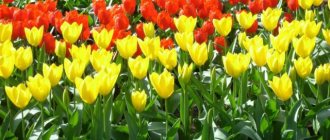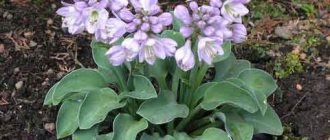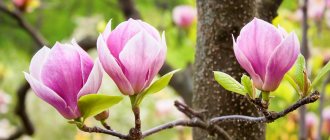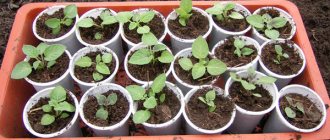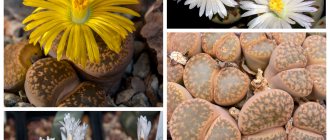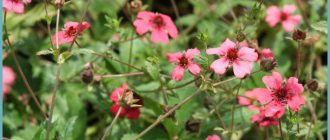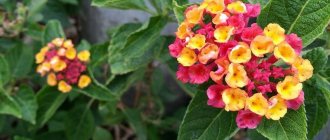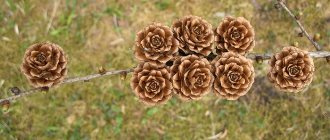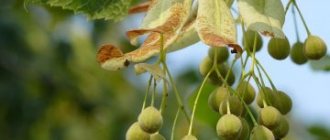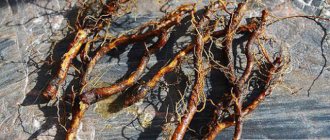Pros and cons of propagating geraniums by seed
This method of reproduction has one significant disadvantage. Planting by seed does not guarantee the preservation of the parental qualities of geranium, which makes it almost impossible to achieve the transfer of varietal characteristics.
Blooming geranium
But there are also advantages to propagating geraniums by seeds:
- simplicity and ease;
- seed material has a long shelf life;
- self-collected seeds will not be infected with diseases;
- sowing is carried out at the end of winter or beginning of spring (by mid-summer the plant will begin to bloom).
Plant care (watering, fertilizing, tying up)
Geranium categorically does not tolerate fertilizers of organic origin. It is enough to feed it, during the period of active growth, a couple of times a month. Feeding is completely canceled during rest, that is, in winter.
The flower is tied in the standard form of cultivation. When the trunk is high enough, round pegs firmly stuck into the soil are used to tie it up. It has the ability to heat up moisture, so it is resistant to drying out. However, in the summer, frequent watering is required. But oversaturation with water can lead to death, so you need to provide it with good drainage.
Attention! The plant does not like spraying. It can lead to fungal diseases.
Drooping leaves indicate an excess of water. This is a sign of illness. And when the soil dries out, pelargonium stops blooming and yellowness appears.
What do geranium seeds look like?
Hydrangea seeds - what they look like and whether it is possible to grow seedlings from them at home
Before sowing geraniums, careful selection of seed material is carried out. What do geranium seeds look like? They should be painted brown and have an elongated oval shape with internal side depressions. The matte-colored shell is dense and looks like leather. The size of the seeds depends on the variety, but they are all large.
Geranium seeds
It is important to carefully select pelargonium seeds. Deformed and small elements are removed immediately; they are unsuitable for planting.
Royal pelargonium from seeds
Unlike other varieties, it grows in South America. Very capricious and requires maximum attention. Loves moist air, lack of direct sunlight and drafts.
Planting begins with the onset of the winter months. Royal requires light soil, which is constantly kept moist. The room temperature should not fall below 20 degrees.
The first shoots appear after 21 days. After this, the boxes with seedlings are moved to a room with a temperature of at least 15 degrees. When three full leaves appear, the sprouts are planted in different containers.
Royal pelargonium has several types: Ansbrock Beauty, Charmy Electo, Deerwood Angel Eyes, Fairy Queen, Tip Top Duet, Deerwood New Day.
How to obtain and collect seed material
Lavender seeds - what the seedlings look like
To independently collect planting material, preliminary pollination of the flower is carried out. A brush is used to move pollen from one flower to another. After flowering, a seed box will form on the plant. When it is completely dry, they immediately begin to remove the planting material.
Seed pod
On a note! Propagation by seeds is used for simple species. Ampelous, royal, double and tulip-shaped varieties cannot be grown this way.
The best time to propagate geraniums
Geraniums should be propagated in the spring. It is at this time of year that all vital processes in the plant are activated, they are significantly accelerated in their work, and this, in turn, contributes to rapid adaptation and growth.
Of course, it is not forbidden to propagate geraniums at other later times, but then flowering will be significantly delayed. You won't see it until next year.
Rules for choosing purchased seeds
Rose seeds - what they look like, can you germinate them at home?
Geranium seeds are purchased only from trusted manufacturers. After opening, carefully inspect the planting material. It must be dry and uniformly colored. The seeds should not show any damage or signs of disease.
Well-known seed producers
It is important to know! Before purchasing, please read the instructions on the back of the package and the expiration date.
When to plant
At home, geranium can be grown at any time of the year. The main thing is that the plant has enough light throughout the day. The best period for sowing pelargonium seeds is the end of February - beginning of March. If the flower is planted later, the shoots will stretch upward, and flowers may appear after 9-10 months.
Watch the video! When and how to sow pelargonium ( geranium ) seeds
Soil preparation
The substrate can be purchased at a flower center or prepared yourself. When purchasing ready-made soil, there is a high probability of non-compliance with the proportions of nutrients. In this case, the first shoots will appear later and will not grow large. It will be bad for geraniums to bloom on such soil.
Flower growers advise preparing the soil mixture yourself (in a ratio of 1:1:2) from:
- peat soil;
- sifted river sand;
- turf.
Note! To protect against infections, the prepared mixture is calcined in the oven or poured with boiling water. Houseplants are often disinfected with fungicidal agents.
When and how to plant seedlings in the ground
Seedlings are sent to the garden only after hardening. The main thing is to make sure that there is no frost at night.
Important! Not all types of pelargonium are intended for growing in the garden. For example, the royal one does not like drafts and is intended only for indoor use.
The soil should be loose, well-drained, and free of clay. Geraniums should be avoided from direct sunlight, so it is best to place the flower bed in partial shade. Flowers are planted in a flowerbed at a distance of 30 centimeters from each other. Watering should be moderate, but drying out should not be allowed. It is necessary to promptly remove faded buds.
Choosing a site for planting, soil
The place in the flowerbed should be of average fertility, loose and with good drainage. Pelargonium does not tolerate stagnant water, so clay soil is contraindicated for it. The area where the geranium will bloom should be chosen in the shade to avoid burns from direct sunlight.
Scarification, disinfection and soaking of pelargonium seeds
Before growing geranium from seeds at home, planting material is first prepared. Partial removal of the shell helps speed up the germination process. To avoid damaging the seed, the procedure is performed using sandpaper. It only removes the top layer.
For disinfection, use a weak solution of manganese or hydrogen peroxide. After disinfection, soak in water at room temperature. Two hours is enough for the planting material to swell.
Seed requirements
In order for pelargonium seedlings to sprout and develop successfully, it is necessary to select high-quality planting material. The seeds should be brown, oblong in shape and always hard. Other options for seeding material can either produce low-quality seedlings, or even leave the grower without a “harvest.” To avoid such troubles, you should not buy seeds at the market or in supermarkets. For this purpose, it is better to visit a specialized store, the quality of the goods in which will be guaranteed to be high. Good seeds are sold ready for sowing, so you don’t have to do any complicated manipulations to get them to germinate.
What geranium seeds look like - photo
Large size garden geranium seeds. They are hard, oblong in shape and brown in color. Next you can see in the photo what geranium seeds look like:
The seeds of indoor pelargonium are small, slightly elongated, shiny.
How to collect geranium seeds
If the plant is indoors, it is possible to obtain seeds only by pollinating the pelargonium yourself. To do this, pollen from the stamen of one flower is very carefully and carefully transferred to the pistil of another using tweezers, a toothpick or a cotton swab.
Soon a box will appear in the middle of the flower, which will gradually ripen, dry out and fall off. Next, how to collect pelargonium seeds is very simple and clear, but you should be warned that from such seed material plants will grow that will be inferior in color saturation to the mother’s.
Selection of pelargonium seeds
To avoid possible mistakes, you need to carefully select and prepare planting material. When choosing seeds, you should pay special attention to the following points:
- Color. High-quality pelargonium seeds have a rich brown color. Slight dullness and light tint are allowed.
- Form. The developed seeds are oblong, with slight depressions visible on their sides.
- Size. The planting material is quite large.
- Shell. Pelargonium seeds are characterized by a dense, leathery shell.
Also, when choosing planting material, pay attention not only to the beauty, shape and richness of the shade of the buds, but also to the maintenance conditions that the flower will need to provide for healthy growth and full flowering. If creating the appropriate conditions necessary for growing the selected type of geranium from seeds at home seems too difficult to you, it is better to opt for another variety of pelargonium.
Processing of seed material
As already mentioned, geranium seeds have a dense shell, which makes their germination difficult. Sometimes you have to wait quite a long time for germination, but the seeds still do not germinate. The reason for failure is improper seed treatment before planting or lack thereof.
Before planting, geranium seeds must undergo scarification - a procedure to remove the dense film. It is not difficult to carry out this procedure yourself. To do this you will need fine sandpaper. With its help, only the top dense layer is removed from the seeds, and no deep tears remain.
After this, they are treated with phytohormones (“Epin”, “Zircon”) and soaked in warm water for several hours.
You need to process each seed separately, rubbing it on sandpaper several times.
If you purchased high-quality seeds from a well-known company, or, for example, bought seeds from China, then you will not need to carry out complex preparatory procedures. All you need in this case is to store the planting material in a dry, dark place, protected from insects and sunlight.
If the packaging with seeds indicates that the material is not prepared for planting, or you have some doubts about the quality of preparation, additional processing will be required. To do this, use phytohormones (“Epinom”, “Zirconom”), after which the seedlings are soaked in warm water for several hours. Carrying out such procedures helps accelerate seed germination and improves the quality of seedlings.
When to plant seeds
If you have the necessary lighting, you can plant seeds at any time of the year. It is still better if the plant has natural light and sunlight. Therefore, the best option is considered to be the period from November to April.
Essentially, during this time, the length of the day gradually increases, which helps the growing seedlings also get used to the duration of light.
How to sow pelargonium seeds at home for seedlings
Pelargonium from seeds can be grown in any shallow container. Suitable for this:
- plastic containers;
- peat cups or tablets;
- toilet paper.
Planting seeds and caring for pelargonium at home is carried out in strict accordance with step-by-step instructions.
In containers
You can sow geraniums at home in special trays. The depth of the container should not exceed 3-4 cm. Pre-prepared trays are filled with soil and watered with warm water. The ground temperature must be at least +20 ℃. Seeds are sown at a distance of 2 cm from each other.
Additional Information! It is not recommended to deepen the planting material too much.
Sowing in plastic containers
Plant the seeds in shallow holes and sprinkle a little of the same substrate on top. Watering after planting is a mandatory procedure. It is recommended to create conditions close to greenhouse conditions, that is, cover with film or transparent glass.
In peat tablets
Growing pelargonium from seeds can be done in a peat soil mixture. Peat tablets are perfect for this. They are watered in advance. Sowing is carried out in shallow holes, the plantings are covered with polyethylene or glass. For this method, it is important to carry out daily ventilation and spraying.
Using peat tablets
It is important to know! Peat tablets should be selected according to their acidity level.
Using toilet paper
Germinating seed on toilet paper is considered one of the simplest and most effective methods. Pre-treated seeds are placed on moistened paper in a container and covered with a lid. When the first sprouts appear, the seedlings are transplanted into the ground as carefully as possible.
Germination on toilet paper
Care
The process of growing pelargonium from seeds
The first shoots of geranium will appear a month after planting the seeds. In 1-2 weeks the first leaves will appear. For rapid growth and abundant flowering in the future, care is important:
- The optimal temperature for seed germination is +23 degrees.
- Store young shoots where there is no wind or draft.
- The light should be diffused.
- Provide access to oxygen: remove glass or film for a few minutes every day.
- When shoots appear, remove the glass or film.
- Moisten the soil with water daily using a spray bottle or pipette. Try not to get it on the foliage, otherwise black spots may appear and the seedlings will get sick. In summer, watering is more abundant than in winter. If the seedlings get sick, water them with a weak solution of manganese or “Fitosporin” (2-4 drops of paste per 200 ml of warm water).
- Provide a temperature of +16-20 degrees. At lower temperatures, plants do not develop, get sick, gradually die, and the risk of fungus and mold multiplying is high.
How to care for geranium seedlings
Correctly carried out planting procedure is part of a good result. Seedlings need to be grown in favorable conditions. Geraniums require timely watering, correct temperature conditions and good feeding.
First shoots
Watering
The amount and frequency of watering directly depend on the time of year. In hot summers, moisturizing is carried out every 3 days. In winter - once a week. The bottom of the container is laid with a thick layer of drainage. The plant categorically does not tolerate excess moisture. Watering is carried out only when the top layer of soil dries.
Feeding
The first feeding is carried out only 14 days after picking. At this stage, the plant requires potassium and phosphorus. Agricola and Effecton are well suited for these purposes. Fertilizers are applied to the soil from March to October. Frequency – once every 20 days.
On a note! In winter, any feeding is suspended.
External factors
Before growing geranium from seeds, it is important to create the right climatic conditions for it. The flower grows only in well-lit places. But, as with other indoor species, direct sunlight should be avoided. Daylight hours for pelargonium should be at least 15-16 hours. In summer, the plant is taken out into the fresh air.
Due to the fact that geranium leaves are covered with a special protective layer, it is strictly not recommended to spray the species. Any moisture on the stem and leaves can lead to rot on the flower.
The flower painfully tolerates temperature changes. For young shoots this is unacceptable. The optimal air temperature is 20-22 degrees above zero, the minimum is +7 ℃.
Picking
After the first sprouts appear, the seedlings are picked and transplanted into individual containers. The depth should be 2-3 cm. Young flowers are transplanted into small and shallow containers.
Picking a view
Pinching
It is recommended to pinch geraniums at the level of 6-8 leaves. Adult species must be pruned in spring and autumn. Timely pruning of weak and damaged shoots will allow you to get an unusually beautiful plant that will delight you with lush flowering for a long time.
On a note! Pinching should not be carried out during the formation of buds and during the flowering period.
Carrying out subsequent transplantation into a pot
To grow geranium from seeds, cultivating seedlings in a temporary container is not enough. The plants will require subsequent repotting into a permanent pot. A signal that the flower is ready to “move” will be the appearance of 2–3 leaves on a new individual. You cannot immediately transplant pelargonium into a large pot. Choose a compact container with a diameter of 10 cm. The young plant will be comfortable in such a pot. As the bush grows, the pelargonium can subsequently be transplanted again into a more spacious container.
It is better to choose pots made from natural materials (clay is ideal). Such containers will ensure a flow of oxygen to the soil and prevent rotting of the root system of the flower.
Flowers are replanted using the transshipment method, without disturbing the soil coma formed around the root. At the time of transplantation, you can use a long-acting fertilizer to speed up the process of flower adaptation. For this purpose, synthetic formulations are suitable that contain the proper volumes of potassium, nitrogen, phosphate, magnesium and other microelements necessary for healthy growth.
The transplanted plant is watered with a small amount of water. In warm weather, the transplanted flower is taken out to the balcony.
As you can see, growing and caring for pelargonium is not at all difficult. It is enough to surround the seedlings with care, and colorful hats will soon appear on the windowsill. If desired, pelargonium can be planted in a flowerbed in May, where it will delight with flowering all summer long. Before frost sets in, the flower is transplanted back into the pot and brought into the room.
When to transplant to a permanent place
Transplantation of strengthened sprouts is carried out at the end of spring. 1-2 days before transplantation, the substrate is moistened so as not to damage the root system and the healthiest plant can be planted in a permanent place. In open ground, the distance between plantings is at least 20-25 cm.
At home, you can grow almost any flower, even an exotic one, from seeds. For some species, the seed planting procedure involves a series of complex activities. Geranium, in turn, is quite simple to sow and achieve a positive result. It is important not only to choose high-quality planting material, but also to follow all the rules for caring for a young plant.
Common geranium
In China, for example, this species has been recognized for many decades as a symbol of wealth and prosperity. To propagate a flower, the seed method is most often used. Pelargonium can become a real decoration not only for the home, but also for the garden plot.
Preparations for growing pelargonium seeds
Pelargonium is best grown from seeds. Most often, flowers grown from seeds bloom better and much more abundantly than geraniums grown from cuttings. If the seeds were taken from hybrid varieties, then upon germination, a flower may appear completely different from the “parents”. However, most gardeners prefer to propagate it using cuttings.
The necessary conditions
Pelargonium is given a southern window sill, but without direct sunlight. The temperature in summer should be no higher than 24 degrees, in winter no lower than 14. The soil should be loose and well-drained. Watering should be moderate but constant. Geranium does not like stagnant water. During the growing season it is fed twice a month with liquid fertilizer.
Sowing time
Sowing pelargonium can be done all year round, but only if additional lighting is provided. If this is not possible, the best breeding time is spring and summer.
Preparing seeds for sowing
Before sowing, they need to be prepared. If they were obtained from home geraniums, then they must be cleared of the hard shell. This will promote rapid development. Next, the cleaned grains are treated with a growth stimulating agent. Then soak in warm water for three hours.
Soil (composition, characteristics)
Pelargonium is not picky about soil; a regular mixture bought in a store will do. But if you wish, you can prepare the soil yourself; for this you will need two parts of turf, one part of sand and one part of peat.
Containers for sowing
Boxes or pots are used for growing. The pot in which the flower will be located is selected according to the size of the root system. Replanting is done only when the plant becomes crowded. It is advisable to use clay pots. They allow air to pass through well and absorb moisture.
You can also use plastic pots, but they do not allow air to pass through and can cause excess water to stagnate. This will lead to rotting of the roots and death of the flower.
How to assemble?
As soon as the seed pods are ripe, in summer or early autumn, you can collect them. To ensure that the seeds are viable, it is better to collect them on time. Otherwise, they will be lost, as they will fall to the ground and be lost among other seeds, for example, violets or pansies.
Geranium seeds are collected in dry and sunny weather. If you don’t listen to this advice, you shouldn’t be surprised if they disappear during drying or storage.
If you need to collect garden geranium seeds, proceed with caution. There are 5 of them in one box. If its bottom is ripe, 5 springs will be released and the seeds will shoot out. Therefore, the springs are loosened carefully. They are cut with scissors until ripe. When cut, there will be no hassle with twisting them inward. Sometimes they do it differently, simply covering the plant with the seeds with a piece of cloth or a towel.
Propagation by cuttings
This method is perhaps the easiest to implement, short-term and most effective. It also allows you to preserve all the varietal properties of the mother plant.
The key to a successful operation lies in meeting two conditions - maintaining optimal temperature and constant lighting.
The advantage of this method is that cuttings can be done several times a year. However, it is worth considering that in certain months the plant is at rest (November-January), and therefore it will not be possible to grow a strong plant from cuttings. And if you want pelargonium to bloom this year, then you need to start propagating it already in March, since it is during this period that all the vital forces of the plant are activated and active sap begins. And geraniums planted in April will bear flowers only next year.
It is also not recommended to start propagating pelargonium before March, for example, in January or February, since caring for the seedlings will be lengthy and painstaking. It will be necessary to artificially illuminate young plants, additionally feed them, and create the most comfortable conditions.
You can also cut pelargonium in the fall (September-October), during routine pruning after flowering. These cuttings will grow well during the autumn-winter period and will produce their first color the following summer.
Natural way of reproduction
Propagation by seeds and cuttings are the most common methods. At the same time, the first one is more natural.
Flower growers use seeds obtained from a plant that has been growing on the windowsill for a long time, or purchased in a specialized store. In the first case, a hybrid is obtained that does not absorb the properties of the parent plant. To preserve the desired characteristics, they practice the vegetative method of propagation. The second method is cuttings. You can find out more about how to properly propagate geraniums from cuttings at home here. Before growing geraniums, prepare the seeds for planting. The first step is scarification due to their dense and hard shell. Having abandoned this procedure, they are not upset when they see the first shoots after 2-3 months. A plant that is ground with fine-grained sandpaper between two sheets will sprout faster. After scarification, pelargonium is planted in the ground, and after 2-3 weeks they enjoy the long-awaited shoots. Purchased seeds are not subjected to it, since they are already prepared for planting.
Other articles about geranium propagation will be useful to florists:
- How to root geranium easily and without problems?
- Peculiarities of propagation of geranium leaves.
When do they ripen?
Lovers of indoor plants are aware that geraniums do not always produce seeds. If they do appear, take into account the following nuances:
- An unhealthy plant will not produce quality seeds.
- A hybrid is always capricious.
- It is often affected by blackleg.
- Hybrid properties are not preserved with this type of propagation.
Geranium produces seeds when properly sown. It is important to take good care of it, providing timely but light watering. After collection, the seeds of ivy-leaved or zonal pelargonium are stored dry in a warm room until planted in a container.
What seed looks like: description and photo
- Geranium seeds are quite large in size, about 6-7 millimeters.
- Oblong in shape.
- Color – light and dark brown.
When purchasing ready-made material for planting, you need to take into account certain subtleties. Flower seeds are sold in several types :
- Scarified - peeled from the outer shell. Such grains germinate faster.
- There are seeds in a shell of artificial origin. It consists of nutrients and minerals that protect the flower from harmful organisms.
- There are also natural raw materials that have not been subjected to any processing.
The first 2 types are preferable to choose, since they are immune, resistant to diseases, and have good germination.
To choose the right propagation material, you need to pay attention to the appearance of the seeds:
- healthy grain has a rich brown color, with a slight matte sheen;
- shape – elongated, with small depressions on the sides;
- The seeds must be firm to the touch.
Important ! You should not buy seeds that are flattened, small, deformed, or covered with spots.
